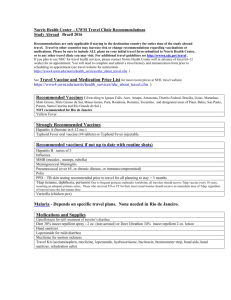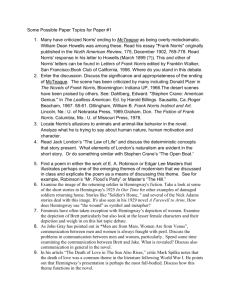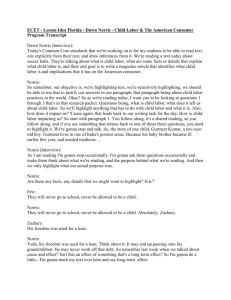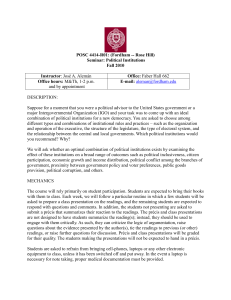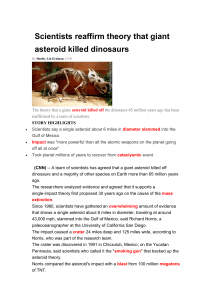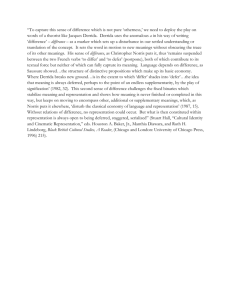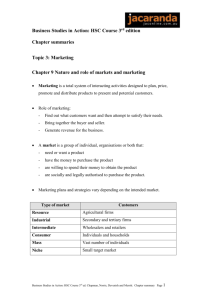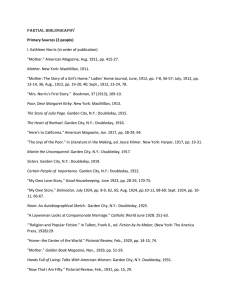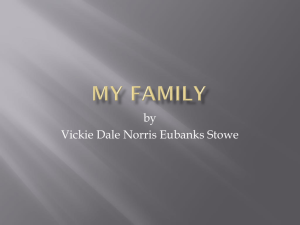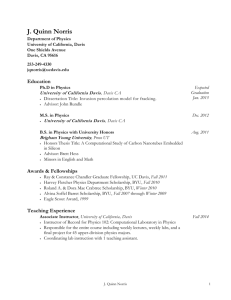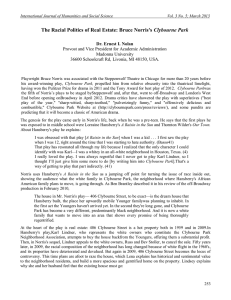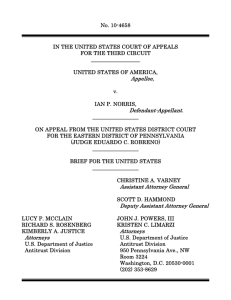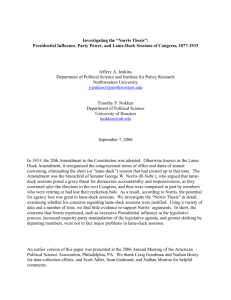Kathleen Norris, “The Beautiful Places”
advertisement
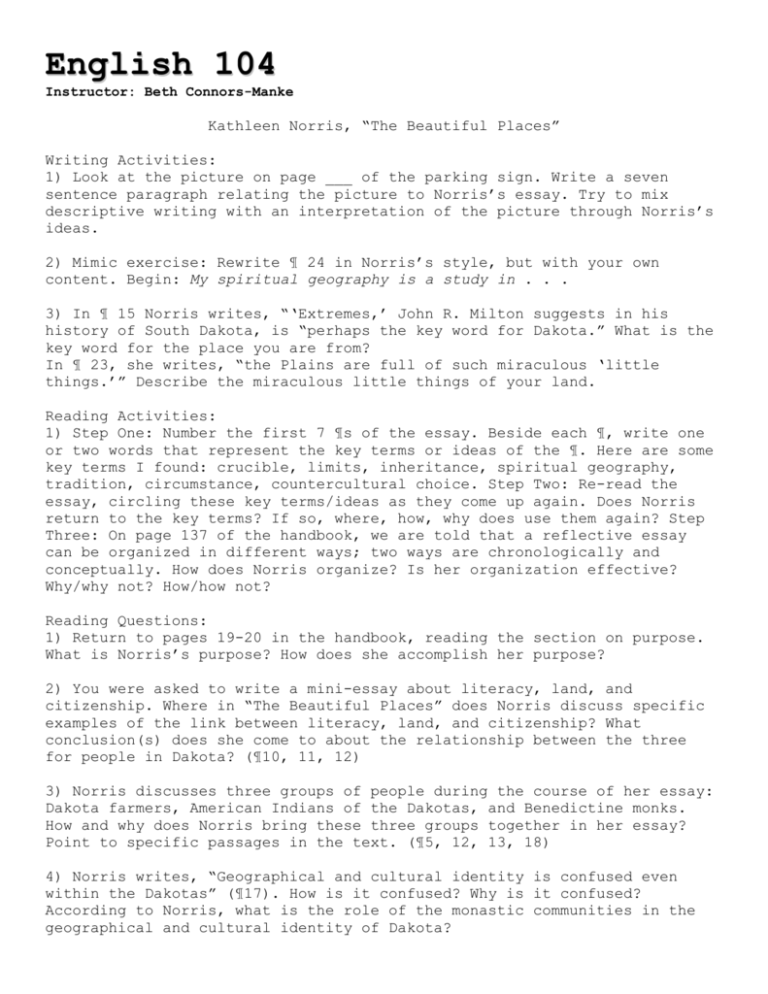
En glish 10 4 Instructor: Beth Connors-Manke Kathleen Norris, “The Beautiful Places” Writing Activities: 1) Look at the picture on page ___ of the parking sign. Write a seven sentence paragraph relating the picture to Norris’s essay. Try to mix descriptive writing with an interpretation of the picture through Norris’s ideas. 2) Mimic exercise: Rewrite ¶ 24 in Norris’s style, but with your own content. Begin: My spiritual geography is a study in . . . 3) In ¶ 15 Norris writes, “‘Extremes,’ John R. Milton suggests in his history of South Dakota, is “perhaps the key word for Dakota.” What is the key word for the place you are from? In ¶ 23, she writes, “the Plains are full of such miraculous ‘little things.’” Describe the miraculous little things of your land. Reading Activities: 1) Step One: Number the first 7 ¶s of the essay. Beside each ¶, write one or two words that represent the key terms or ideas of the ¶. Here are some key terms I found: crucible, limits, inheritance, spiritual geography, tradition, circumstance, countercultural choice. Step Two: Re-read the essay, circling these key terms/ideas as they come up again. Does Norris return to the key terms? If so, where, how, why does use them again? Step Three: On page 137 of the handbook, we are told that a reflective essay can be organized in different ways; two ways are chronologically and conceptually. How does Norris organize? Is her organization effective? Why/why not? How/how not? Reading Questions: 1) Return to pages 19-20 in the handbook, reading the section on purpose. What is Norris’s purpose? How does she accomplish her purpose? 2) You were asked to write a mini-essay about literacy, land, and citizenship. Where in “The Beautiful Places” does Norris discuss specific examples of the link between literacy, land, and citizenship? What conclusion(s) does she come to about the relationship between the three for people in Dakota? (¶10, 11, 12) 3) Norris discusses three groups of people during the course of her essay: Dakota farmers, American Indians of the Dakotas, and Benedictine monks. How and why does Norris bring these three groups together in her essay? Point to specific passages in the text. (¶5, 12, 13, 18) 4) Norris writes, “Geographical and cultural identity is confused even within the Dakotas” (¶17). How is it confused? Why is it confused? According to Norris, what is the role of the monastic communities in the geographical and cultural identity of Dakota? En glish 10 4 Instructor: Beth Connors-Manke 5) Point to ¶s where Norris performs a cultural analysis. (¶4, 10, 14, 22)


